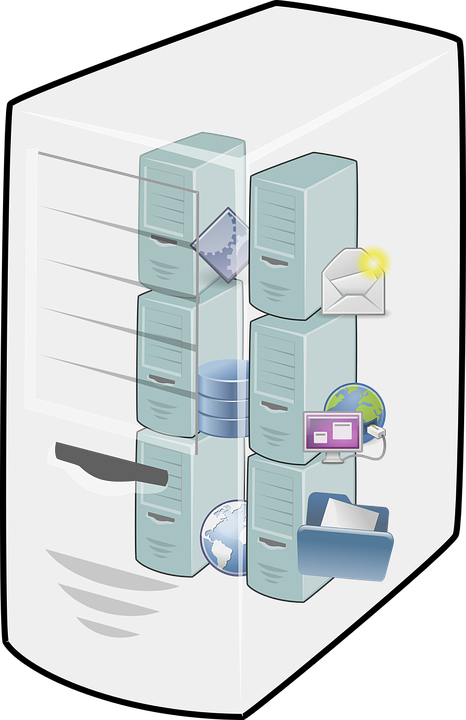Virtual machines have been an important part of workloads in organizations for a really long time. Before VMs, there were physical servers that were hard to manage. With modernization, the idea of breaking these servers into smaller, independent, hardware-like partitions was brought to reality by VMs. However, as it is with everything in technology, VMs are starting to give way to newer alternatives. With exponentially growing sizes of workloads, it is not just hard but also expensive to create and manage virtual machines as they consume considerable CPU and memory resources. Over the last couple of years, the cloud emerged as an incredible new way of hosting and managing previously virtualized workloads. However, the costs to migrate outweighed the need to switch to a more flexible and scalable platform. Enter Docker with its container technology. Containerization has proved to be a game-changer and has taken the IT world by storm. And, with tools like Kubernetes, containerization became easier and more efficient. In this article, we discuss the best practices to follow if your organization is in the process of transitioning from virtual machines to containers.
VMs vs. containers
VMs and containers are similar in theory as both offer an isolated environment to develop and host applications. However, the difference is in the execution of the concept. VMs are heavy virtual instances of hardware that are hosted on a single physical server. VMs are completely isolated from the host and require a separate operating system to operate. Having separate operating systems makes it hard to relocate or migrate applications and at the same time running separate instances of OS needs more resources. Each VM needs to be configured based on the application that you will be running on it.

Containers, on the other hand, are lightweight components that can share the same operating system. Containers are completely isolated and don’t consume a lot of resources as they only virtualize the application and not the entire OS. Containers are also portable since they don’t rely on the OS and can be migrated to and from different public cloud providers. Essentially, containers do what VMs do, but with additional features like flexibility and scalability that make containers ideal for microservices-based applications. With containers, rolling out updates or modifications isn’t a hassle as you can roll out changes quickly without having to worry about the entire application going haywire.
Shift virtual machines to containers seamlessly
Organizations want to leverage the advantages that containerization has to offer. However, not everyone knows where to start or how to go about such a big shift. Let’s take a look at steps you should take to ensure a smooth transition from virtual machines to containers.
Start with the basics
The most important step while beginning your migration journey is to layout the blueprint. Organizations willing to take up this task should be clear on what environment they’ll be deploying their containers on (on-prem or the cloud). The cloud is certainly the better option, however, if you are looking to advance slowly, you can deploy containers on-premises and migrate them to the cloud in the future. You should avoid going all in and making too many changes all at the same time. Application migration is a long process and rushing it can prove detrimental to your organization’s goals.
Another important thing to ensure before diving into migration is whether your team is prepared for the task at hand. Your development and operations teams should be able to work in tandem with a shared cloud-native mentality to ensure a strong foundation.

Break your application into services
Teams should take their time to chalk out how they’ll be able to break their existing applications down to independent components. The idea is to have them as loosely coupled as possible in order to leverage containers’ full potential. This process is time-consuming as it may involve rewrites and some modifications to the original application. However, not all applications can be broken down into services. In that case, you can “lift and shift” the entire application to a container. The container will work as a VM, but you’ll be able to run the application using a fraction of resources VM used. This isn’t ideal as you will not be able to fully benefit from containers. Another way to deal with this is to use tools like KubeVirt that allow you to manage your VMs and containers through a unified platform making it easy to gradually migrate your virtual machines to containers.
Refactor your application
VM-based applications need to be refactored so that they can be containerized. The idea is to make minimal changes to the code and restructure the applications so they can be divided into services without changing any functionality. However, while doing so you should try to ensure that these services are loosely coupled with each other. This is not always possible during migration as sometimes dependencies between different components are unavoidable. The resulting application will be easy to manage and scale. However, you’ll still not be able to harness the full potential of containers.
Rewrite your application
Sometimes, the only way to migrate is to start fresh. Although this process is long and frustrating, starting from scratch helps developers by providing a brand-new perspective. Designing an application around the idea of containers can prove easier as developers are compelled to write code that leverages the full benefits of containers. Developers can now choose different coding languages to develop different services based on which one suits the functionality best.
Create more adaptive delivery pipelines
Once you containerize your application, you need to test it for a number of possible use-cases. This kind of quality assurance testing requires an enhanced delivery pipeline. You can use delivery pipeline tools like Jenkins, GoCD, and GitLab. The idea is to perform all your application and integration testing on the services that are already running in a container. The common mistake some organizations make while the migration is that they test the components as they did traditionally and then package these components in containers if tests are successful. This can lead to problems in the future as containers can alter application runtime which can lead to services timing out before they perform the desired tasks.
Traffic shifting for incremental migration
Another important migration tactic is traffic shifting. Developers can deploy an API gateway on a container orchestration platform like Kubernetes and use it to direct traffic to existing platforms. This way, developers and operators get familiar with the new platform and can start incrementally directing traffic to the new services. To do this, north-south (ingress) traffic should be decentralized so application and product teams can plan independent migrations. You should also employ traffic shadowing and canary release routing to shift traffic. The east-west (service-to-service) traffic across different infrastructures should be supported. The use of service mesh is also pretty popular for traffic routing.

Virtual machine to containers: Daunting journey with great rewards
Migrating your virtual machine-based applications to containers can be a daunting process. However, organizations making this move should take their time and not rush things. With the help of tools like Kubernetes and a good migration plan, your migration journey can be made easier. Once successfully migrated, you can have extremely robust, reliable, and scalable applications that are easy to develop and update.



